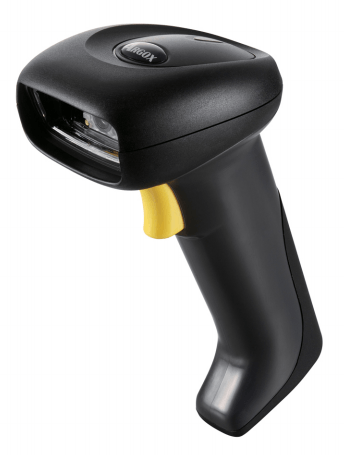Improved shipping organization and productivity

Barcodes and barcode scanners reduce manual and paper-based data entry in the shipping process, which reduces errors and discrepancies when picking, packing, and labeling. At the most basic level, a barcode involves a symbol (e.g., barcode) that encodes a series of characters corresponding to an order number in your shipping solution or order management system. The barcode scanner scans this symbol and accesses the corresponding order and all related details.
Processing barcodes
To process barcodes, sellers either place the barcodes on a pick list or packing slip, or they locate the barcodes separately—in close proximity to where the specific item resides—and use a barcode scanner (either handheld or other) to update their inventory management software to indicate that the item has been packed and processed.
The scan result prompts the shipping system to populate that particular order’s details to the current screen or step in a process. For example, picked orders travel down an assembly line in bins or boxes for shipping. When the order arrives at the “label” area, the barcode on the packing slip is scanned. The scan registers the order number and allows the handler to weigh the package and have the associated weight automatically populated to that order’s details (assuming a USB scale). This eliminates all manual entry in favor of seamlessly sending accurate data to your shipping system.
What to look for in a barcode scanner
In eCommerce shipping, investing in a barcode scanner generally becomes cost effective only when you are picking items from a fairly large inventory that requires a lot of organization and space. In this case, the best practice is to use a wireless, non-Bluetooth barcode scanner with a decent amount of range.
At a minimum, barcodes save the time—and potential errors—it takes to manually type in an order number. More advanced shipping solutions not only allow the scan to isolate a specific order number, but also to apply shipping rules triggering the automatic purchasing and printing of a label without human intervention. Barcodes and barcode scanners can be extremely powerful in an environment where a single scan can trigger a printed label with very little work or decision-making in between. eCommerce sellers might start with simple order-number scans to save typing and then automate more of the process from there.
Look for a shipping solution that allows you to scan a barcode from a packing slip with a handheld or other scanner.
Related Articles & Resources:
- Shipping Supplies Guide for eCommerce Businesses
- Printer Guide for eCommerce Shipping
- Shipping Scale Guide for eCommerce
This article is from The Definitive Guide to eCommerce Shipping
Request a Demo




